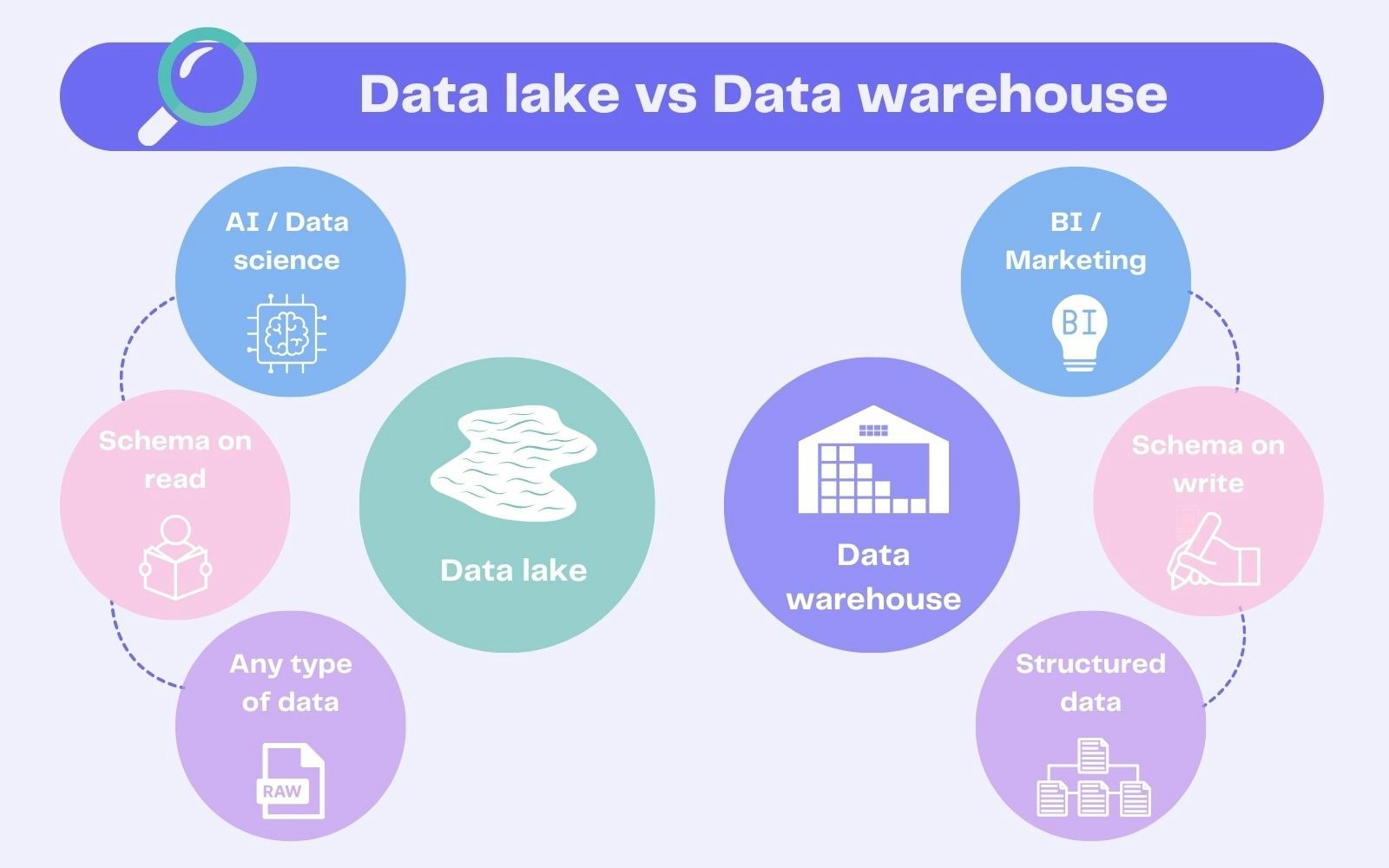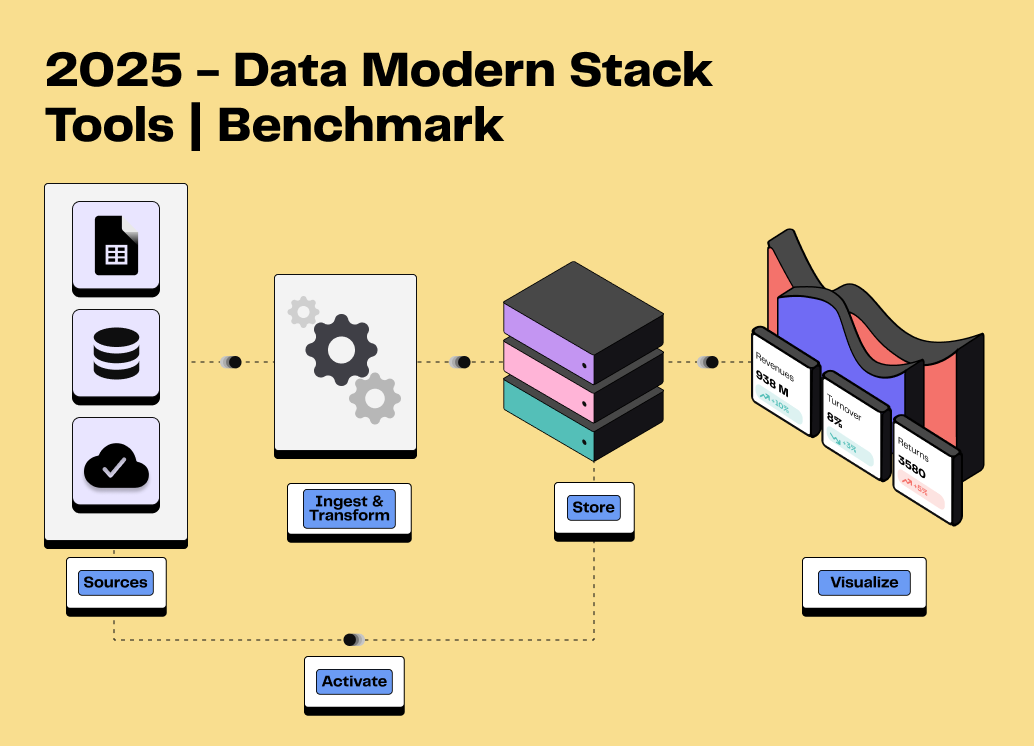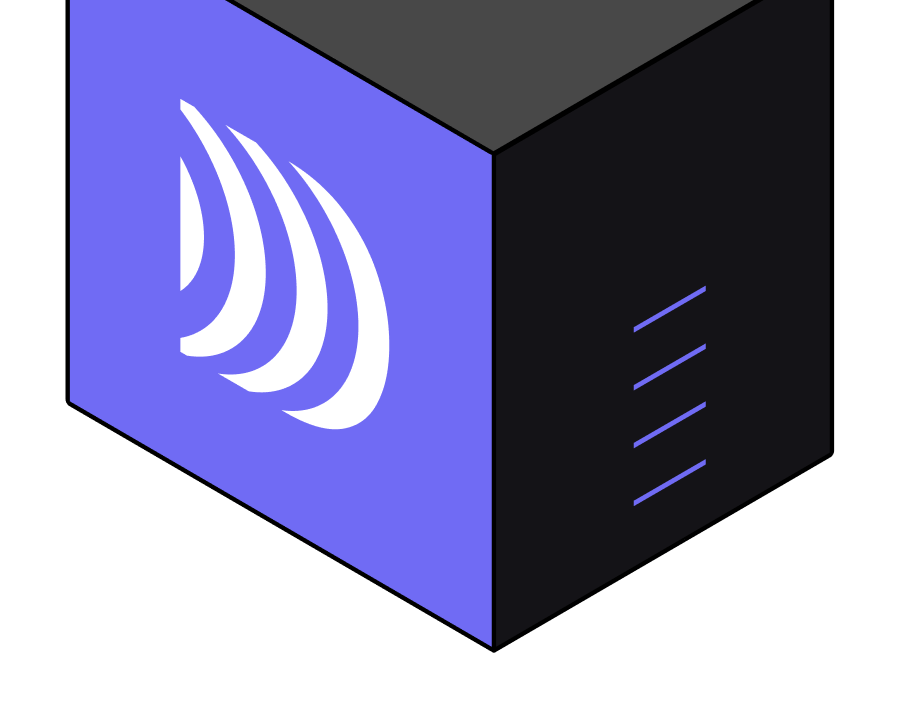
Data lake vs Data warehouse: What’s the difference?
6min • Last updated on Nov 7, 2025

Olivier Renard
Content & SEO Manager
Every day, we generate 402 million terabytes of data globally — the equivalent of 85 billion DVDs. And that volume keeps growing.
According to McKinsey’s latest State of AI report, 75% of companies now use generative AI. This widespread adoption is accelerating the creation of all types of content: text, images, audio, video...
It’s estimated that around 90% of all data is unstructured. In this context, organisations need powerful tools to store and make that information usable.
Two solutions dominate the landscape: the data warehouse and the data lake. Often confused, these two technologies actually serve very different purposes.
Key Takeaways:
Data lakes and data warehouses are two modern data storage solutions widely adopted by businesses and organisations.
Though sometimes seen as interchangeable, they rely on different architectures and serve different objectives.
Data lakes are suited to raw data storage and machine learning projects, while data warehouses are better suited for analytics, business intelligence, and marketing activation.
The composable CDP DinMo is built on a cloud data warehouse and enables seamless activation of your data across business tools, using a zero-copy architecture.
🔎 Discover how data lakes and data warehouses work, their respective benefits and use cases. What are the differences — and how do you choose based on your goals and data stack? 💡
Data lakes and data warehouses: Two approaches to data storage
The data lake: Flexibility and massive storage capacity
A data lake is a storage solution designed to absorb very large volumes of data, without constraints on format. Closely linked to Big Data, it can handle structured data (like tables) as well as unstructured formats (like images, videos or logs).
Data is stored in raw form, without any prior transformation. This is known as a schema-on-read approach: the structure is only defined when the data is analysed, offering significant flexibility.
This makes it particularly suited to machine learning, data mining, or long-term archiving projects. Storage costs are generally low, since the data is simply dropped into a distributed system.
💡 Common tools include: Amazon S3, Azure Data Lake, and Hadoop.
The data warehouse: Performance and structured data readiness
A data warehouse is designed to store structured data and make it rapidly available for analysis. Data is cleaned and organised before storage, following a pre-defined structure — known as schema-on-write.
This setup supports fast querying and feeds business intelligence tools, reporting platforms, or marketing systems.
A data warehouse is the preferred option for generating reliable analytics, tracking campaign performance, or measuring customer lifetime value.
Leading solutions in the market include: Google BigQuery, Snowflake, and Amazon Redshift.

Data lake vs Data warehouse
What about the rest? Data marts and data lakehouses
Two other concepts round out the picture:
A data mart is a subset of a data warehouse. It is tailored to a specific department or function, such as marketing or finance.
A data lakehouse combines the flexibility and scale of a data lake with the structure and performance of a data warehouse. It allows all types of data to be stored while remaining analytics-ready.
Tools like Databricks embody this new approach that aims to combine the best of both worlds.
Key differences
Several factors help distinguish data lakes from data warehouses. Here are some key criteria to guide your decision:
Plusieurs éléments permettent de distinguer data lakes et data warehouses. Voici quelques critères qui vous aideront à guider votre choix.
Criteria | Data Lake | Data Warehouse |
|---|---|---|
Data type | Raw, structured, semi-structured, or unstructured | Structured and modelled for analysis or activation |
Target audience | Data engineers, data scientists, AI teams | Analysts, BI teams, marketing, business users |
Storage cost | Low: cheap storage on distributed systems (S3, HDFS…) | Higher: data optimised for queries and performance |
Analytics performance | Less suited to direct analysis, queries often slower | High performance for BI, fast and scalable SQL queries |
Security and governance | More complex to implement, depends on tool and configuration | Built-in (access control, GDPR compliance, auditing…) |
Typical use cases | Machine learning, AI, large-scale storage, historical archiving | Reporting, visualisation, marketing activation, real-time analysis |
Key criteria for comparing data lakes and data warehouses
As data lakes host diverse formats and use a more flexible architecture, strict security and governance rules are essential. In contrast, a data warehouse relies on a structured framework that facilitates access control and compliance.
How to choose?
Different objectives, complementary architectures
The data lake acts as a raw reservoir. It stores massive volumes of data in their original format, with no upfront transformation. It’s ideal for data science, machine learning, or cost-efficient cold storage.
The data warehouse, on the other hand, is built for analytics. It structures data so it can be easily leveraged by business teams — marketing, finance, sales, product, and more. It allows for fast, reliable, and actionable queries.
In business settings, both approaches often coexist: the data lake supports storage, historical archiving, or AI projects, while the data warehouse makes analysis easier. Others adopt a data lakehouse, blending the lake’s flexibility with the warehouse’s structure.
💡 A complementarity that led DinMo to launch a new integration. Our composable CDP now lets you export your segments directly to an Amazon S3 bucket, in Parquet, CSV, JSON, or XML format.
The central role of the data warehouse in the Modern Data Stack
With the rise of the Modern Data Stack, the cloud data warehouse has become the cornerstone of many organisations’ data architecture. Solutions like Google BigQuery, Amazon Redshift, or Snowflake now offer strong performance, scalability, and cost control.
The data warehouse acts as a central repository. It gathers transformed data, ready to be modelled, analysed, and activated.
DinMo is built on this model, activating customer data directly within your business tools — without duplicating it into a proprietary environment. The warehouse becomes your single source of truth, reducing complexity while improving governance and security.
Which system should you choose for your marketing use cases?
The data warehouse as a marketing ally
Marketing teams need clear and usable data to generate insights and support decision-making. The data warehouse is built on a well-defined structure and schema, making it easier to integrate with business tools such as CRM platforms, BI software, or automation and activation solutions.
The data is ready to use — for building segments, launching campaigns, or measuring performance. For marketing teams, the data warehouse is therefore the ideal environment for developing data-driven strategies and delivering personalised experiences.
How does DinMo leverage cloud warehouses to activate your data?
At DinMo, we’ve chosen to offer native integrations with leading cloud data warehouses: Google BigQuery, Snowflake, Amazon Redshift, and others. It’s at the heart of our composable approach.
Our platform works directly with the data stored in your warehouse, with no duplication. Using our Reverse ETL module, the segments you create in DinMo can be activated across all your business tools: CRM, ad platforms, email tools, and more.
This simple and powerful environment gives marketing teams full control over their data — without technical bottlenecks.
Conclusion
Data lake or data warehouse? It all depends on your goals, use cases, and the maturity of your data stack:
The data lake offers great flexibility for large-scale storage of all types of data.
The data warehouse supports analysis, decision-making, and marketing activation.
Discover how the composable CDP DinMo brings value to the data already in your warehouse. As a true activation layer, the data warehouse offers a reliable, structured, and business-ready environment for marketing teams.
FAQ
What are the typical marketing use cases for a data warehouse?
What are the typical marketing use cases for a data warehouse?
A data warehouse is used to centralise customer data, analyse campaign performance, build audience segments, calculate LTV or churn, and feed CRM tools.
It enables marketing teams to manage their activity based on reliable, structured data that is ready for activation.
How does data transformation differ between a data lake and a data warehouse?
How does data transformation differ between a data lake and a data warehouse?
In a data warehouse, data is stored using a predefined format (schema-on-write), whether transformation occurs before or after loading.
In a data lake, data is stored in raw form and only transformed at the time of reading (schema-on-read). This offers greater flexibility but requires additional processing.
What’s the difference between the star schema and the snowflake schema?
What’s the difference between the star schema and the snowflake schema?
These concepts relate to the structure of a data warehouse. The star schema is a simple model where a central fact table is linked to several dimension tables.
The snowflake schema, which is more complex, normalises dimensions by splitting them into sub-tables.
The former is faster to query, while the latter optimises storage in large data warehouses and avoids redundancy.
What expertise is required to use a data lake effectively?
What expertise is required to use a data lake effectively?
A data lake demands advanced technical skills: file format management, distributed processing, security, and so on. It’s typically managed by data engineers or data scientists.
A data warehouse also requires technical knowledge, but its structured model makes it more accessible to business profiles through BI tools.




















